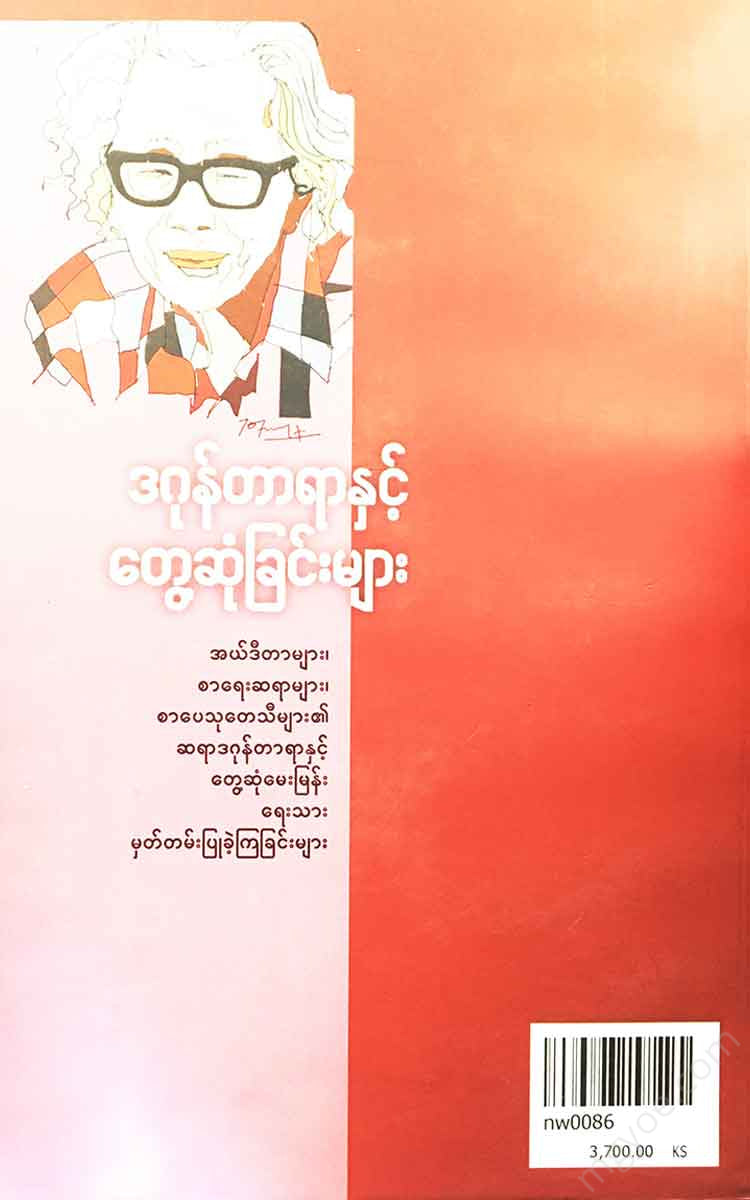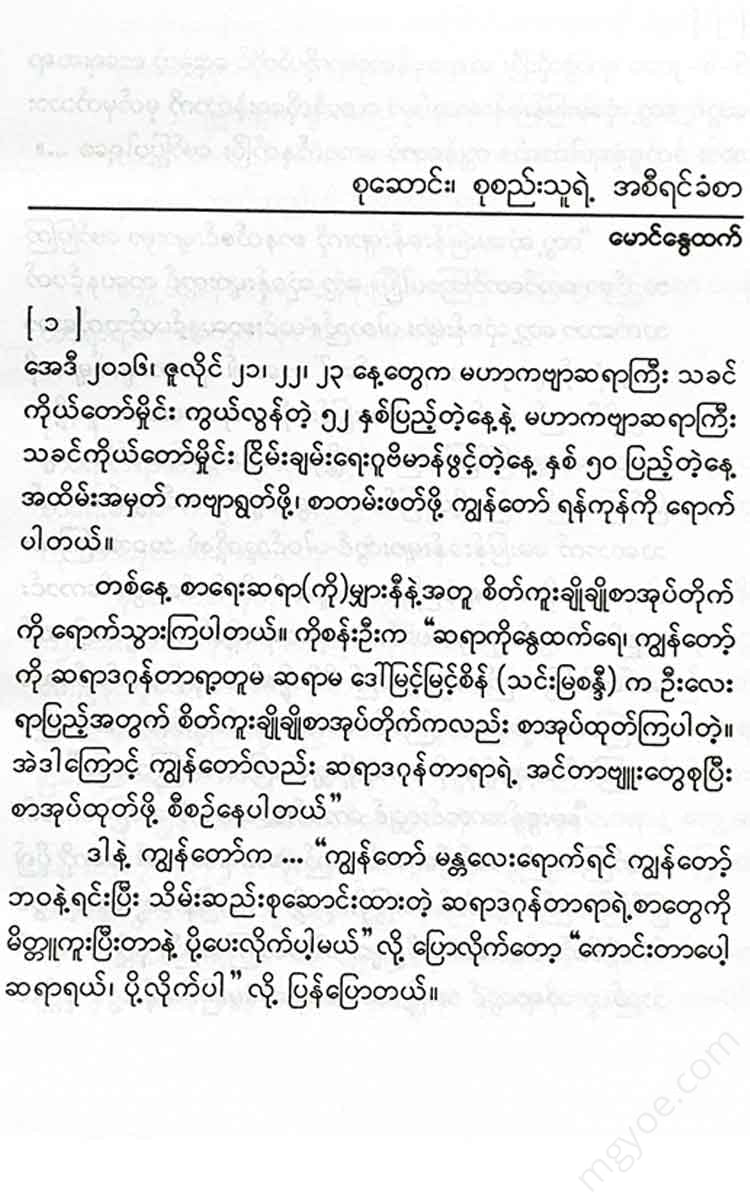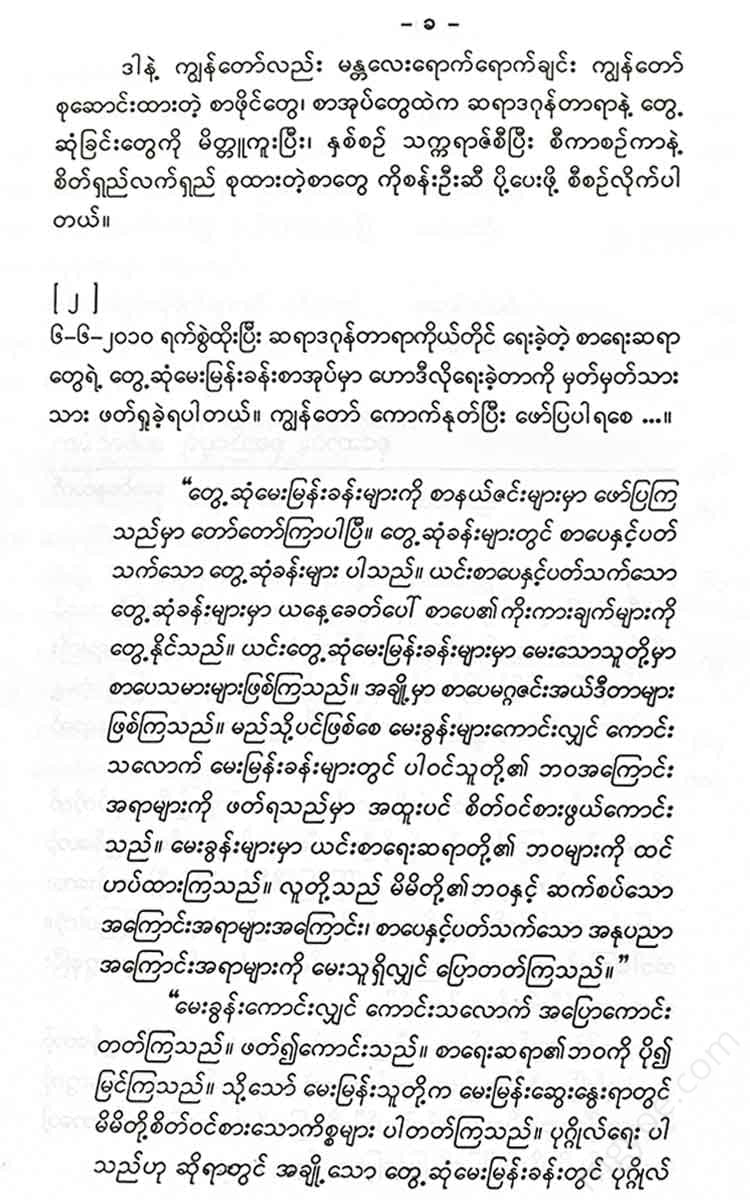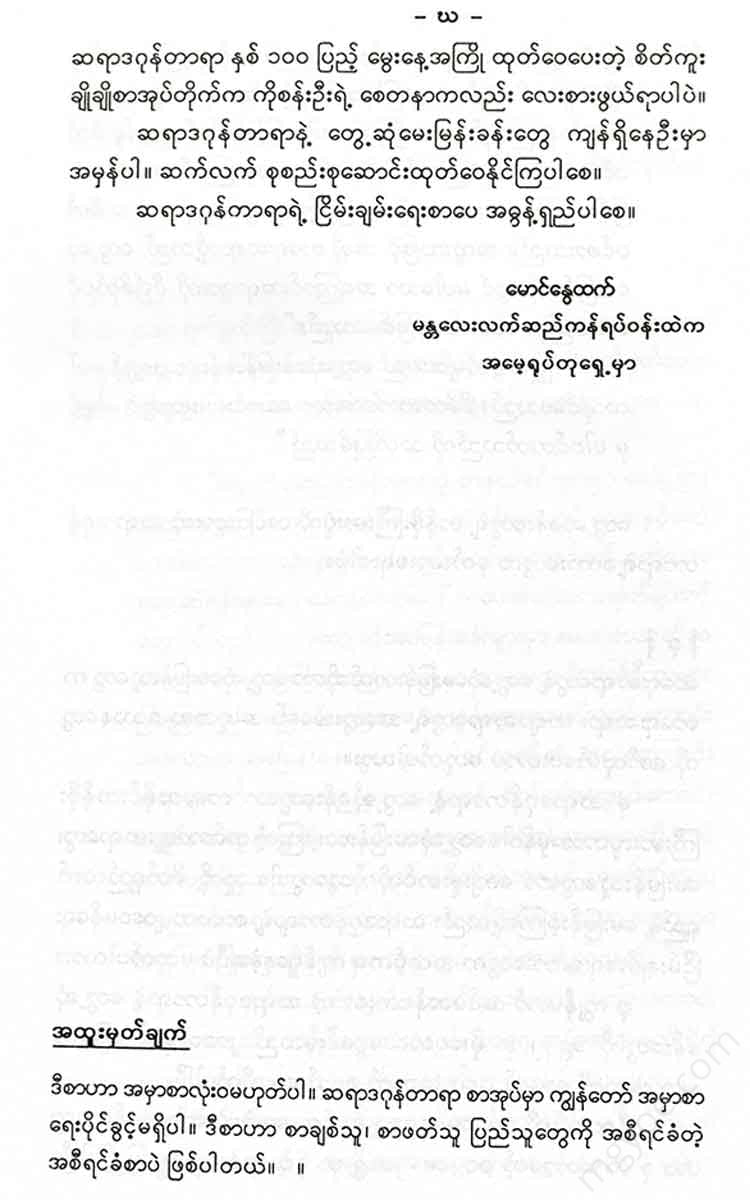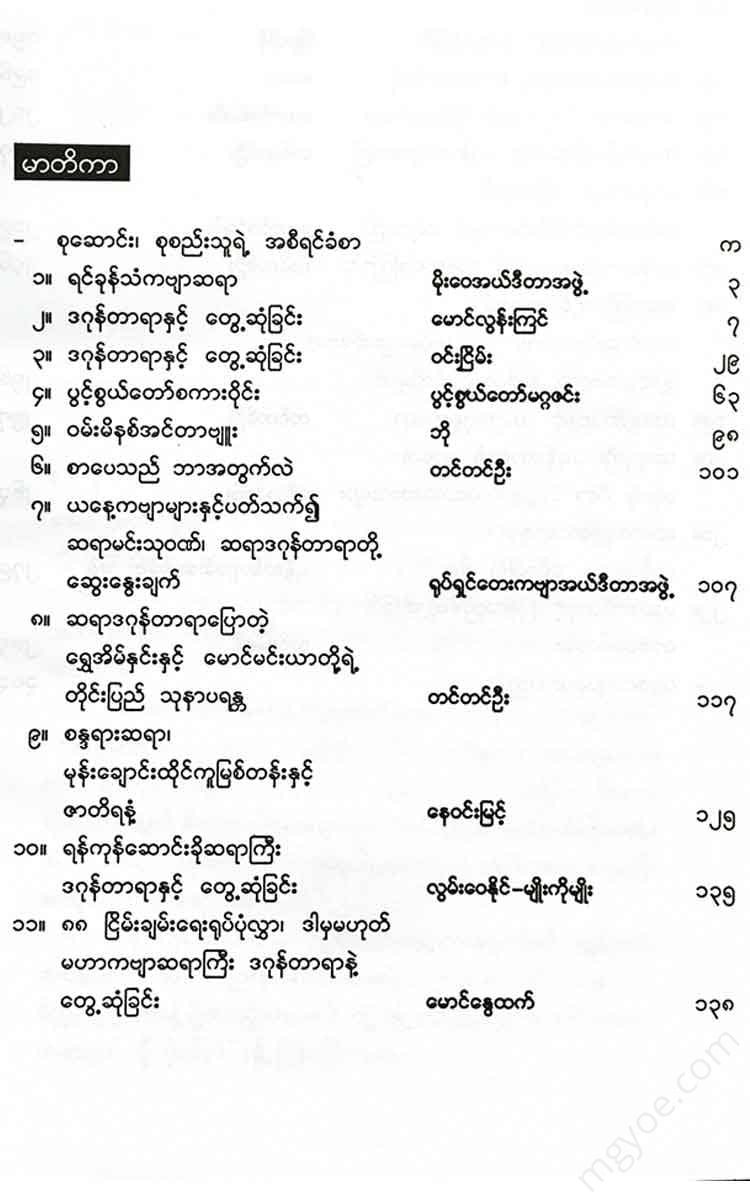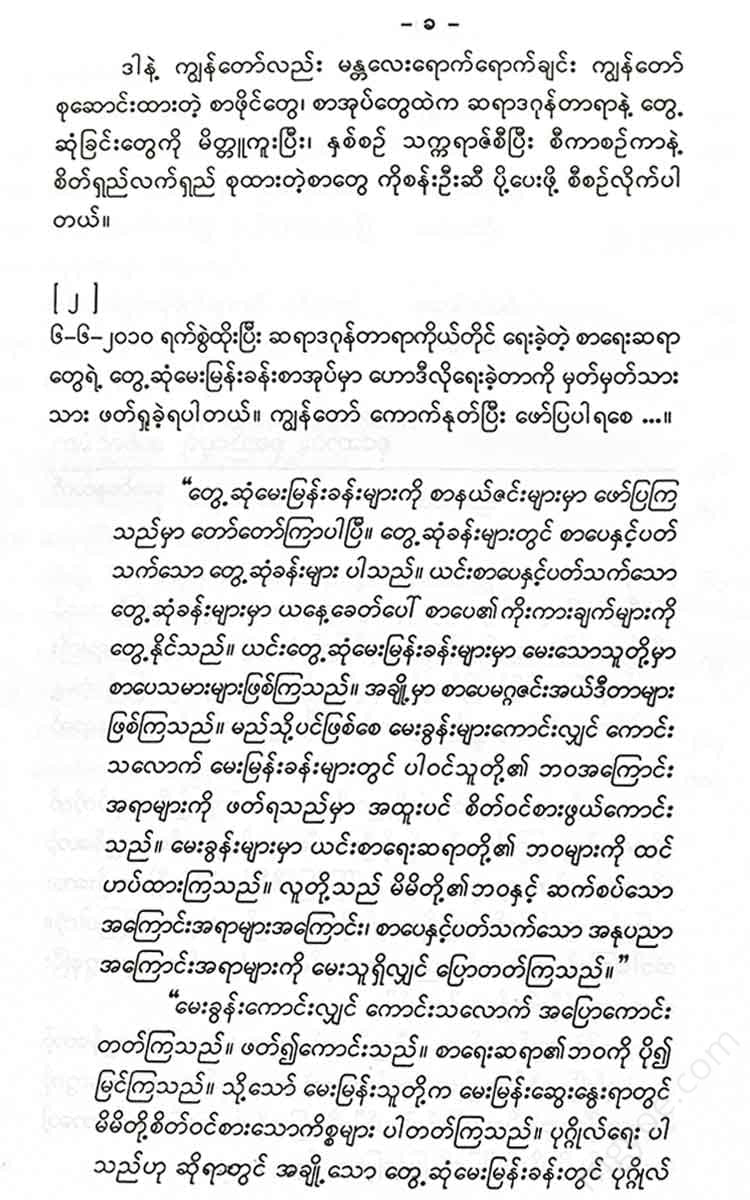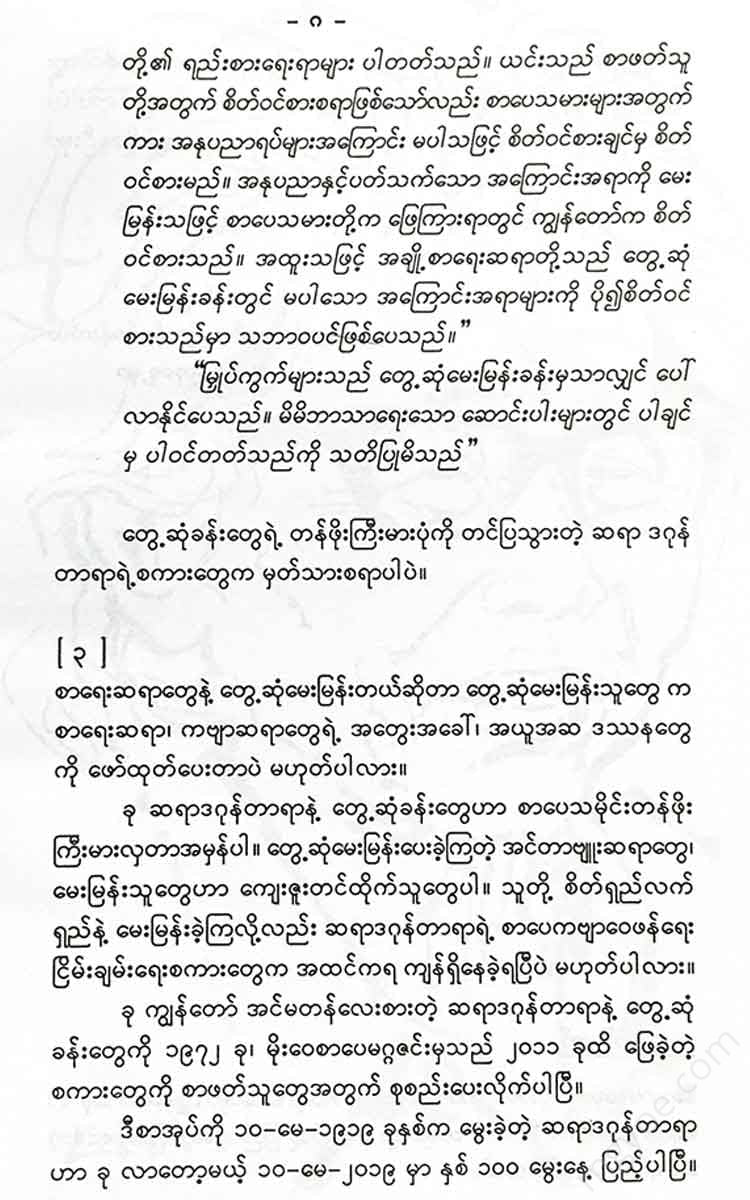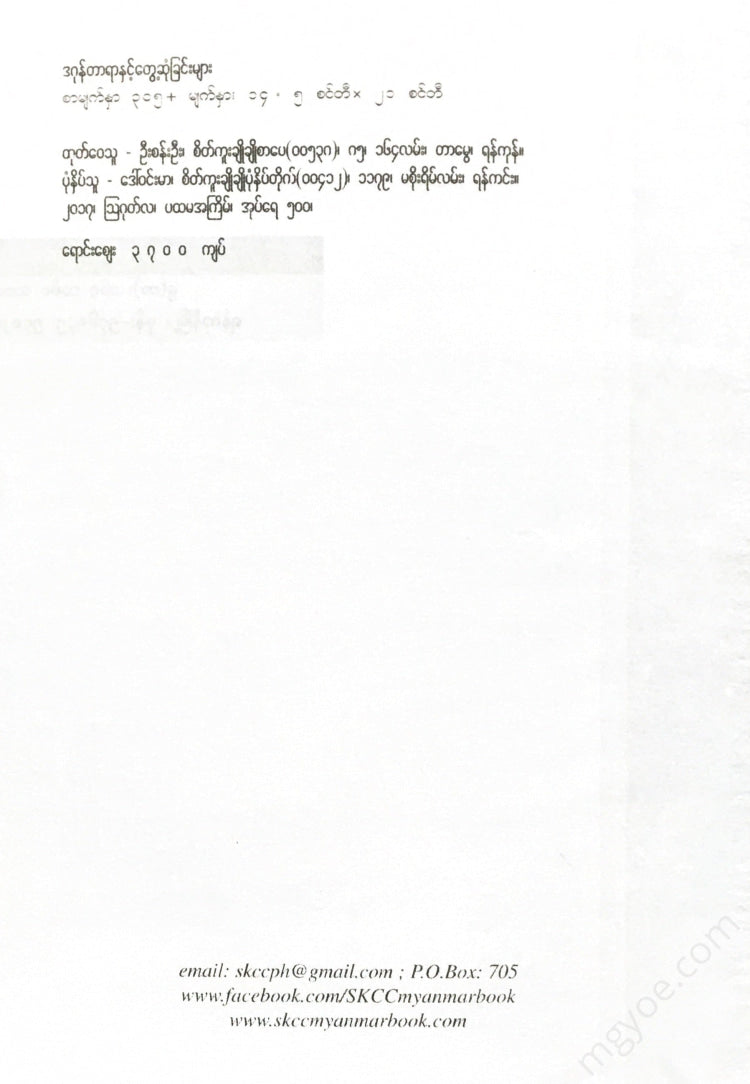စိတ်ကူးချိုချိုစာပေ
Dagon Tara - Melting Snow Melika
Dagon Tara - Melting Snow Melika
Couldn't load pickup availability
The Myitkyina River is flowing smoothly. It is January and there is a blanket of snow. The river is calm and looks like a large ice floe.
I decided to take a dip in the Myitkyina water in this cold season, so I went in. The water was as cold as ice. I had to get out and climb back up the mountain.
I stood on the bank and looked out over the river. Above the trees on the other side, I could see the mountains, dark and blue. The mountains in the distance were white and blue. The ice was white against the blue, which was covered with fog and snow. In the morning sun, the icebergs were sparkling. The river was calm and clear. Although it was called the Myitkyina River because of the city, it was actually the Ayeyarwady River. The Ayeyarwady River itself flows from the confluence of the Maykha and Melikh rivers behind the glaciers in the distance. It was parallel to the mountains that flowed south from the Mongolian and Tibetan plateaus. The rivers also flowed into the sea. National cultures emerged along the river basins. In the east, the Khmer culture flourished along the Mekong River. Thai culture flowed along the Salween River. In the west, Hindu culture flourished along the Ganges River. Along the Ayeyarwady River, the cultures of the Chin, Kachin, and Shan ethnic groups began to intertwine. The Ayeyarwady River became a cultural continuum that would later become the collective force of Myanmar.
The Ayeyarwady River, which flows from the glacier that I can see in the distance, flows steadily and flows down the lower reaches of the Mon region, winding its way through the valleys. The Ayeyarwady Delta, where we were born, is the land of the Mon people. The names of our towns and villages are all Mon words. The name of our town, "Kyaik Latt," means "the place where the Buddha fell."
From afar, the sound of drums, gongs, and cymbals echoed. The sounds of the Manao Valley were echoing.
Travel articles and Manau music are fresh in my ears.
It was my first time in Kachin State. I was there when Chief Minister Thakin Nu invited writers and journalists from Yangon and Mandalay to attend the Manaw Festival. I was there as a representative of the Writers' Association.
From Manao Square, I heard the sound of drums and gongs. My servant was excited.
Four days ago, on the third Independence Day, I heard the Karen drum dance and the music of the flute at the Presidential Palace reception. While listening to the flute, I imagined the sound of the Shan pot from Shan State, where I had been about 10 years ago. The feeling of a union that all ethnic groups should unite was stirred in my mind. The sounds of ethnic music also touched my heart and made me jump. I began to understand the establishment of states based on the principle of the right of ethnic groups to self-determination.
On that night of independence, the sky was filled with diamonds and emeralds. In the dark blue sky, the stars were emerald, diamond, and sapphire. The stars were visually scattered with colors from their sharp corners, but each one was different in its own color. Each one was beautiful.
The stars on our Union Flag also have their own colors, their own beauty, and their own unique style.
The sound of the gongs and drums from Manaw Kwin floated on the wind. Was it drifting across the Myitkyina River to the distant glaciers?
The sound of Kachin drums came out. There must be Maykha and Melika rivers on the other side of the glaciers. The snow melted and flowed into the Ayeyarwady. The sound of the frog drums that I heard the other night mixed with the sound of the drums and came in. The colors of the glacier were sparkling. Diamond stars and emerald stars were passing through the glacier.
( 2 )
Diamonds and emeralds are in my hands.
I was mesmerized by the Karen national drum dance.
In fact, the delta region where we live is a mixed area with Karen people. There are Karen people around our village. We also have them in our village. We only paid attention to “sound distortion” and did not notice the rest of their culture. The word “sound distortion” refers to a sound that is different from what we are used to hearing. It is a comparative meaning. In music, a person who plays the white keys of a piano is said to be playing the black keys. A person who plays only the black keys can be said to be playing the white keys. For a person who plays both white and black, there is no such thing as distortion. All are musical sounds. The feeling of such sound distortion is only a feeling of comparison. This is also the meaning of describing the sound as “unpitched”. When English is pronounced in Burmese, the English will say that Burmese is “unpitched”. The Burmese will say the same. When English pronounces Burmese, they say “unpitched”. The sound in English does not exist in Burmese. The sound in Burmese does not exist in English. This is because of the different anatomical and tongue positions of each ethnic group. The pronunciation of the ethnic groups in Myanmar is also different from each other. It is natural that Myanmar and the ethnic groups such as Mon, Rakhine, Shan, Karen, Kachin, Chin, Kayah have different pronunciations. Originally, they started from the Yangtze River basin, which flows from the mountains of Mongolia and Tibet. Over the past thousand years, they have gradually migrated to the Mekong, Thanlwin, Melekha, Maykha, Ayeyarwady, Chindwin, and Duthawady river basins, and have formed ethnic groups with their own national cultures. The sound of Karen does not exist in Myanmar. Therefore, it cannot be pronounced like Karen in Myanmar. The sounds of Mon cannot be pronounced in Myanmar. If the sound cannot be pronounced, it cannot be written in words. It is natural that they are different from these ethnic groups. Therefore, different languages and alphabets exist in different ethnic groups. Knowing and recognizing such cultural differences is the basis of the concept of self-determination. It is not possible to see and understand the difference by saying that Burmese and Karen are the same, Burmese and Shan are the same...etc. We must feel and see the difference. We must recognize the difference. We cannot blame the difference for not being able to speak fluently, having a hoarse voice, etc. It is not because a child is not fluent that he or she is not fluent. It is just the nature of the difference in speech. Especially Burmese people often say in a blaming tone, "Isn't it good?" This is a biased view from their own side.
After the Second World War, the national liberation movement was striking with great force. We, Myanmar, also declared independence and established the Republic of the Union.
While watching the Karen drum dance at the Independence Garden of the Presidential Palace, I was thinking about the principles of the Union. I lived in an area where Karen people were mixed, but I did not study Karen culture. I am not satisfied that I have only just experienced Karen drum dance. I watched Karen drum dance when I was young, but I was not interested. Culture is a means of communication that helps us understand each other and build friendship. In particular, dance and music are the most exciting forms of art. I am amazed by the beauty of Karen drum dance reflected through this art. I am excited.
The black and red flowers are swaying and swaying. Does it represent the shape of the branches and leaves of the trees swaying when the wind blows in the forest? Is the chorus they sing together the sound of the wind blowing through the leaves? Is it the sound of the flowing water of the Salween River? Is the dance they dance, jumping, swaying, and raising their hands, expressing the beauty of the Salween River valley and the mountains and forests? They are the children of the forests and mountains, and they represent the beauty of the forests and mountains of Myanmar. They represent the joy of the harvest season.
The lights hanging from the trees in the presidential palace courtyard were a dazzling array of colors, shimmering in the colors of emeralds and rubies. Beyond them, I gazed up at the blue sky. Diamonds and emeralds twinkled.
The Union, which is composed of ethnic groups, is like a large painting, painted with different colors. The Republic of the Union is a painting made of different colors.

